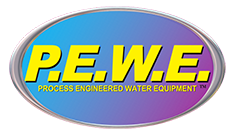 The Earth contains many resources. One of the most important to life is water. However, only about 3% of the Earth’s water is fresh water and can be used for human and animal consumption. For this reason, it is crucial that we find ways to treat and decontaminate waters that have been polluted. One of the best ways to do this is to use water oil separator systems.
The Earth contains many resources. One of the most important to life is water. However, only about 3% of the Earth’s water is fresh water and can be used for human and animal consumption. For this reason, it is crucial that we find ways to treat and decontaminate waters that have been polluted. One of the best ways to do this is to use water oil separator systems.
As the name implies, these water treatment products are used to remove oil and other pollutants from water in commercial or industrial locations or anywhere that oil could contaminate the environment. The following are some of the most common types of water treatment systems.
Conventional Gravity Separators (API)
Conventional gravity separators use the force of gravity to separate oil and other contaminants from water. This works because oil is less dense or lighter than water. Therefore, when oily water is put into a separator, the oil rises to the top, solids and sediment sink to the bottom and the water is left in the middle. The oil is then skimmed off the top and disposed of, while water is free to flow through an outlet on the side of the tank for further processing or to be released into the environment. Solids and the sediment layer are scraped off the bottom into a sludge pump for disposal.
Parallel Plate Gravity Separators
In this type of water oil separator system, corrugated plates made of an oleophilic material are placed parallel to one another in a tank with a space of about 6-12 millimeters between them. Water and oil are then allowed to flow through the tank and in between these plates. The oil in the water is attracted to and gets stuck on the plates.
As more and more oil droplets attach, they form larger droplets and eventually rise to the surface where they are collected and discharged into a used oil tank. The water, now free of oil, is allowed to continue flowing through the tank and into a clean water outlet, where it can then be released for other uses.
Hydrocyclone Water Oil Separator System
A hydrocyclone water oil separator system uses an active vortex created when oily water is injected at an angle into the tank. The centrifugal force accelerates as it creates a cyclone or spiral shape. Since water is denser than oil, it is pushed to the outer edges and allowed to fall towards an outlet that leads to further processing or into the environment.
The lighter oil is forced towards the center and upwards through the top into a used oil tank. This type of separator is appropriate for highly efficient oil removal from water, such as uses in factories and highly contaminated waters.
Flotation Separators
The last of the water oil separator systems is commonly referred to as DAF (dissolved air flotation), uses dissolved air to increase the rate at which the oil rises. In the separator oily water is mixed with water saturated with dissolved air, creating small air bubbles. The oil in the water attaches to these bubbles and are brought to the surface of the separator where the oil, sludge, and solids are skimmed off and held in another tank. Any solids or sediment to heavy to rise sinks to the bottom where it is collected in a drain. The DAF wastewater then passes through an outlet, ready to be used again or filtered more.
Each of these separates oil and water through slightly different processes, making some better than others depending on their intended use for a specific company or industry. Factories, restaurants, commercial businesses, and marine sectors can be more efficient, healthier, and better for the environment when they choose to use these water treatment systems in collaboration with their operation.


